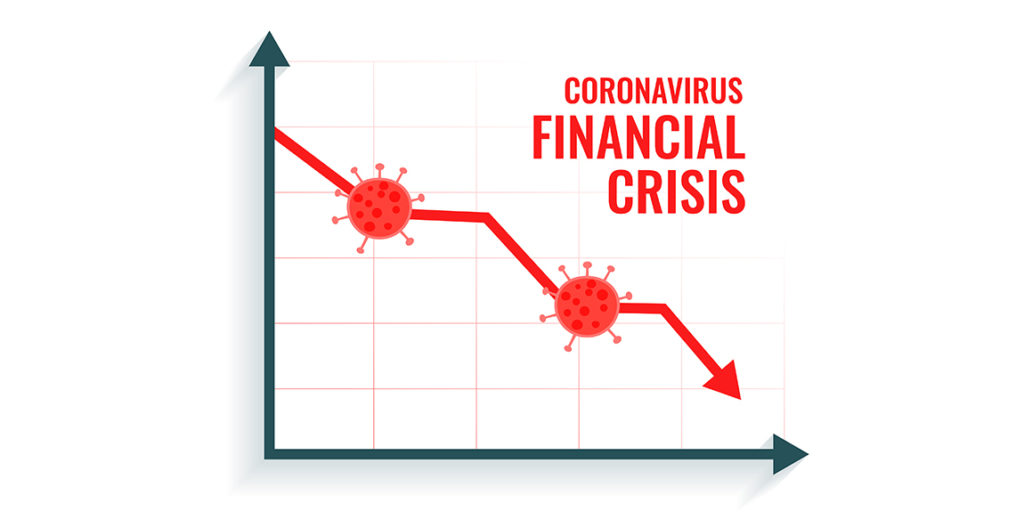As an eCommerce business owner, a drop in organic traffic can be one of your biggest nightmares. While some amount of ebb and flow in website traffic is par for the course, any sharp drop in traffic is likely to induce panic. In a rush to solve the problem, oftentimes you may not spend enough time to validate the issue. This, in turn, can lead to time and energy spent in solving the wrong problem or worse still, deepening the current crisis.
A good starting point is to see if what you are witnessing is a traffic drop or a decline.
Traffic Drop versus Decline
Simply put, a drop is a sudden change in your website traffic. It is likely that it has been caused either by a technical issue on the site or an algorithm update or a penalty that Google has imposed. A decline, on the other hand, is far more gradual. Let us look at the causes of each in some detail:
Traffic Decline
Some of the common reasons that result in a traffic decline include:
- Seasonal issues
- New entrants
- Change in your sales strategy
- Removal of high traffic content
- Change in SERP features
- Google analytics set up
- Product Inventory
- Brand Reputation
- Current Events
- Increasing Paid Spend
- Mobile Compatibility Issues
1. Seasonal Issues
Odds are that you could be contending with seasonal issues that impact website traffic. If you are an online fashion retailer, for example, your ethnic wear collection would see a spike around the festive season and a decline post that. Similarly, if you are selling swimwear, come winter and you are likely to see a decline in traffic. A YOY comparison of traffic will give you a fair idea of whether what your site is witnessing is a seasonal aberration. While as a marketer you do not have direct control over this aspect, you could certainly be prepared for it, as well as tweak your marketing budgets to take these factors into account.
2. New Entrants
Ever so often the decline in website traffic can be on account of the entry of new competitor/s with a strong brand or a marketing blitzkrieg that causes your direct traffic to drop. A firm ear to the ground, when it comes to market intelligence, is therefore, key.
3. Change in your sales strategy
It is a possibility that you have gone ahead and listed your products on popular third party platforms. While your sales may be soaring through these platforms, your organic traffic on your website may have taken a hit for the same reason.
4. Removal of high traffic content
There is a chance that as a part of the site restructuring, you have removed some pages that were bringing in high traffic.

It is proven that removing or updating several pieces of relevant content can have a huge impact on the traffic of the website.
That be the case, using a 301 redirect, will pass on most of that page’s equity to the new page on your site.
5. Change in SERP Features
It will be worth examining if there has been a change in the SERP landscape. Even if your site rank is constant, your click-through rate could have taken a hit on account of new features such as answer boxes, featured snippets, knowledge graphs, shopping carousels and more.
If the keywords you’re targeting are triggering “featured snippets†for example, and you are not the featured snippet, you are likely to lose traffic. It may be worth your while in such cases to look at less competitive keywords where SERPs aren’t as crowded.
6. Google Analytics Set Up
If you are seeing a drop in traffic numbers in Google Analytics, it will be worth checking if the Google Analytics code is placed on all pages. A good approach to follow is to see if there is a discrepancy between the impressions/clicks on the search console versus the stats being seen in Google analytics.

Any changes made in the settings of Google Analytics can also show a decline in traffic to your website.
It is imperative that the Google Analytics code be placed on all the pages to avoid any discrepancies.
7. Product Inventory
If you have discontinued a certain product category or a bestseller, the traffic that you attracted on account of it is also bound to be impacted. It is imperative therefore to ensure that whenever you discontinue a certain product, you use a 301 redirect to the closest matching category page. Here are some best practices to follow for a Magento store:
- Ensure that the product is set discontinued to†yesâ€
- There is a short description available
- The visibility of the product is set as “Searchâ€
- The meta tags for discontinued products are retained
- Any product relationship associations are removed
- In case the discontinued page is offering an SEO benefit it could be re-evaluated after a while. Should there be no SEO benefits, a 301 redirect will be in order.
8. Brand Reputation
It will be worth checking if there was any event that eroded your brand reputation. It could be something directly connected such as a faulty product or something as tangential as the political views of the owners that did not go down well with the audiences and impacted the way the users perceived your offerings.
9. Current Events
There can be a number of other unforeseen events that may not have any direct relation with your brand but may still land up impacting your traffic.

Coronavirus pandemic has adversely affected the disposable income of consumers which in turn has declined the overall traffic on eCommerce sites.
In the COVID scenario, for instance, the travel industry has had the biggest hit. With the overall lockdown and the fear of stepping out, travel-related queries have taken a big hit while the focus has been on health, food delivery services and more.
10. Increasing paid spend
It may not have occurred to you that the decline in organic traffic could actually be the result of an increase in paid spend. While you may still be getting the same amount of traffic on the site, with an increase in paid ads, it may just not be organic traffic. Working closely with your PPC team can therefore go a long way in ascertaining this shift.
11. Mobile Compatibility Issues
A quick bifurcation of traffic by the device could help you arrive at whether the loss in traffic witnessed by your website is on account of mobile traffic. With mobile-friendly websites being increasingly preferred, a non-responsive website could be causing a dent in the traffic.
 Drop in Traffic
The ability to determine the reasons for the drop in your website traffic ensures that you can pivot your SEO strategy and make quick recoveries. Here are the common reasons that may be causing the drop:
- Google Algorithm Update
- Decreased Visibility (Keyword Ranking Shifts)
- Â Competitors Outranking you
- Loss of backlinks
- Issues with Technical SEO
- Â Missing product page reviews
12. Google Algorithm Update
You could have been hit by a change in algorithm update that Google has been making in order so that low-quality sites do not make it to the top of search results. Clearly, there is less and less workaround around Google’s “quality first†principle. Panda, Penguin, and Pigeon being some of Google’s hard taskmasters. If you notice a sudden drop in traffic and rankings, odds are you might’ve been bitten by one of them. If, for example, your site has been impacted by the Panda update, working on the site’s content quality is key. If on the other hand, the problem that you are facing is in the backlink department, you need to scan your site with a backlink quality check tool.
13. Decreased Visibility (keyword ranking shifts)
Keeping an eye on the top-performing keywords can also give you important clues. If high volume keywords have declined in rankings, they could be causing the decline in organic search traffic. In which case you need to work towards reclaiming those rankings.
14. Competition Outranking you
With competition publishing quality content frequently, there is a chance that you have been outranked by them, resulting in a decline in traffic. A close analysis of the search results pages will help you come to this understanding as also to boost your content efforts. Thin content can play havoc with your SEO efforts and your site traffic. Should your website be suffering from thin content, removing, improving or consolidating pages is key.
15. Loss of Backlinks
A robust backlink tool can help you evaluate if loss of backlinks is causing a decline in traffic.

It is highly recommended to update the content of the website keeping the backlinks in mind as every relevant backlink has the potential to get a lot of traffic to the website.
Clearly, it is the loss of high-quality relevant backlinks that can hurt your website. That being the case, a link reclamation and acquisition strategy will stand you in good stead.
16. Issues with Technical SEO
There could be a number of technical issues that your site could be suffering from causing a drop in traffic. Common issues include:
- Pages not having index tags
- Slow-loading website
- Google Analytics account not set up properly
17. Missing product page reviews
If traffic on your product pages is declining, it will be worth checking if it is on account of low number of user reviews. Product page reviews go a long way in better rankings as well as conversions. Of course, you would need to ensure that the reviews are optimized as per SEO requirements. For example, it will be prudent to ensure that the product reviews have a canonical tag pointing to the parent product page. Pro tip- It is recommended to host reviews using the platform that the product is built on. Also, to ensure you have full control over reviews it is better not to use third party reviews.
To Sum Up
Every time that you witness any change in your website traffic, the key really lies in asking relevant questions and getting to the core of the issue. In a sales focused culture like the one we currently live in, the tendency is to celebrate wins without understanding why the website traffic is on an increase. The fact remains that in good times if traffic is going up, you need to understand why it is going up as much as you need to know why it is declining in not so good times. A company culture that encourages this sense of inquiry can go a long way in replicating success.

